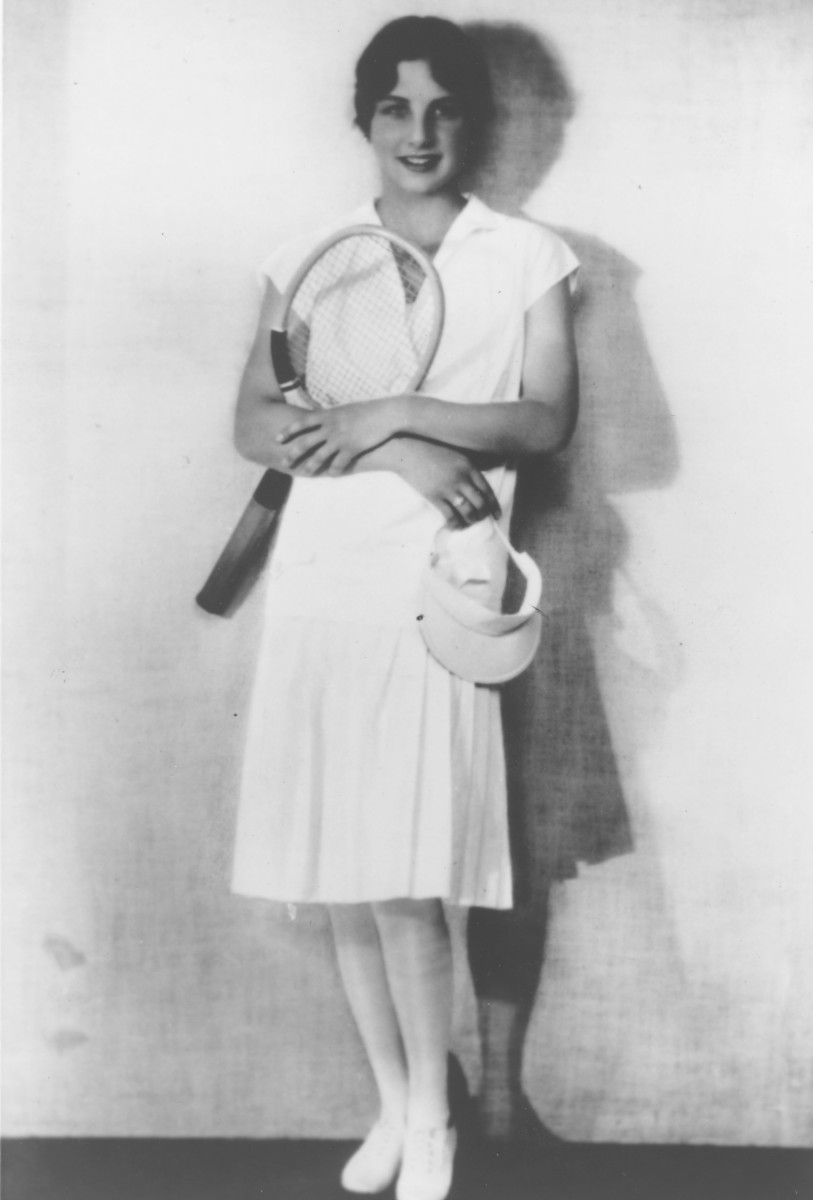The Cal 100: No. 3 -- Helen Wills
We count down the top 100 individuals associated with Cal athletics, based on their impact in sports or in the world at large – a wide-open category. See if you agree.
No. 3: Helen Wills
Cal Sports Connection: Wills attended Cal in the 1920s and won several Grand Slam tennis titles while she attended Cal. Even though the Bears did not have a women’s tennis team at the time, Wills was the first woman to receive an athletic letter at Cal.
Claim to Fame: Wills won 19 Grand Slam singles titles and is considered one of the best women’s tennis players in history. She won 14 consecutive singles titles in majors in which she participated, a streak that is unmatched in history. Wills won gold medals in the 1924 Olympics in singles and doubles. In 2000, Cal’s Center for Neuroscience was renamed the Helen Wills Neuroscience Institute based on her $10 million donation.
.
No tennis player in history, male or female, dominated his or her era as thoroughly as Helen Wills (also known as Helen Wills Moody and Helen Wills Roark). You can debate which athlete was the best tennis player in history, but there is no debate about Wills’ absolute supremacy for a 15-year stretch from 1923 to 1938.
One statistic almost defies belief: From 1927 to 1933, Wills won 14 consecutive Grand Slam singles events in which she participated. No one, before or since, has come close to that. Steffi Graf and Margaret Court never won more than six consecutive majors. Suzanne Lenglen never won more than five straight. Serena Williams and Martina Navratilova never won more than four in row. Chris Evert never won more than three straight.
Of course, there is far more depth in the women’s game today, and Wills would have been blown off the court by Williams. But Babe Ruth would never get a hit off a 102-mph fastball thrown by today’s pitchers, and he is still considered one of the best baseball players in history.
How thoroughly an athlete dominates the competition in his or her era is the only measure that makes sense.
And Wills dominated like no other. Wills actually won 18 straight majors that she was able to finish, as defaults interrupted the official streak.
More often than not, Wills breezed through those Grand Slam events without breaking a sweat. She lost only 13 games over six matches in the 1932 Wimbledon tournament, the closest match being a 6-3, 6-1 victory over Helen Jacobs in the finals. She lost fewer than 20 games in the 1927, 1928, 1929 and 1930 Wimbledon events as well.
She did not lose more than three games in any set of her five matches while winning an Olympic gold medal in singles in 1924.
Starting with the U.S. National championships (now the U.S. Open) in 1924, she did not lose a single match that she finished in a Grand Slam singles event for the rest of her career, with her final major title coming in 1933. Her only “losses” in that span came when she defaulted in the 1933 U.S. Nationals finals, and in 1926 when an emergency appendectomy forced her to default a second-round match at the French Open and subsequently withdraw from the next major event, Wimbledon. (In those days a withdrawal was officially considered a defeat.)

Respected English tennis journalist A. Wallis Myers of The Daily Telegraph and Daily Mail ranked Wills the year’s No. 1 women’s player in the world nine times.
Interestingly, it was two matches that Wills lost for which she is best remembered. We will get to those two matches in a moment, but let’s start with her time at Cal.
She enrolled at Cal in the early 1920s on an academic scholarship, and graduated as a member of Phi Beta Kappa, although history records are unclear whether she graduated in 1925 or 1927. In any case she won at least two of her seven U.S. Nationals singles titles while she was a student at Cal.
Even though Cal did not have a women’s tennis team at the time, Wills became the first women to receive an athletic letter at Cal.
She would ultimately win eight Wimbledon titles and four titles at the French Nationals (now the French Open). She also won 19 Grand Slam doubles titles.
Wills was virtually unbeatable in all tournaments, putting together a 158-match winning streak without the loss of a set, with some reports claiming she won 180 matches in a row.
Her streak ended in controversial fashion, in the finals of the 1933 U.S. Nationals. She defeated Helen Hull Jacobs in 10 of their 11 meetings, but in this title match, she defaulted while trailing 3-0 in the third set, claiming a painful injury to her leg and hip. Many interpreted her exit as an excuse because she couldn’t bear losing to Jacobs.
But Wills did not play any Grand Slam events in 1934 before returning to win the 1935 Wimbledon, beating Jacobs in the final after being down a match point at 2-5 of the third set. As a result of the criticism Wills received for her 1933 default, she refused to play in the U.S. Nationals again, probably robbing her of three or four more major titles.
Wills’ other noteworthy loss came in a small tournament in France, but is considered one of the most important matches in women’s tennis history. It took place on February 26, 1926, in Cannes, when a 20-year-old Wills took on 26-year-old Frenchwoman Suzanne Lenglen, a six-time Wimbledon champion, in their one and only meeting.
The match was played on a small court jammed packed with a rowdy crowd of about 6,000 spectators, some of whom were hanging out of nearby windows and trees, nearly all of whom were rooting for Lenglen. It was sort of like a group of freshmen basketball players traveling to Duke’s intimidating Cameron Indoor Arena to face a Blue Devils lineup that included Christian Laettner, Grant Hill and Bobby Hurley coached by Mike Krzyzewski.
Wills’ introverted personality and efficient style contrasted with that of the flamboyant Lenglen, and Wills lost the match 6-3, 8-6, although Wills thought she had won the second set when a disputed line call went against her on set point.
Wills reached her peak a year of two later, and continued to dominate women’s tennis during the so-called golden age of American sports in the 1920s following World War I (then known as the Great War). Babe Ruth, Jack Dempsey, Bobby Jones, Red Grange and Bill Tilden were among the other star athletes of that era.
On January 28, 1933, Wills defeated Phil Neer, the eighth-ranked American male, 6-4 in a one-set exhibition “Battle of the Sexes” match in San Francisco.
Wills had an impact in other ways.
She helped usher in a new style in women’s tennis fashion, playing in knee-length pleated skirts rather than the longer ones worn by her predecessors.
She graduated from Cal with a Fine Arts degree, and made an impression in that realm.
She wrote three books that were published: Tennis (a coaching manual), Fifteen-Thirty: The Story of a Tennis Player (an autobiography) and Death Serves an Ace (a mystery written with Robert Murphy).
Wills served as inspiration for important works by Diego Rivera.
Wills was also a painter, and her paintings and etchings appeared in San Francisco and New York galleries, including at the Grand Central Art Gallery in New York. On June 17, 1929, the first exhibition of her drawings was opened at the Cooling Gallery in London.
She died in 1998 at the age of 92, and she bequeathed $10.5 million to Cal to endow the Neuroscience graduate program. In 2000 the university renamed the Center for Neuroscience the Helen Wills Neuroscience Institute.
In its 1998 obituary of Wills, the New York Times called Wills "arguably the most dominant tennis player of the 20th century and the first American-born woman to reach international celebrity as an athlete."
Martina Navratilova: "Helen Wills Moody was a feminist before feminism was invented."
The Cal 100: No. 4 -- Pete Newell
Cover photo of Helen Wills courtesy of Cal Athletics
Follow Cal Sports Report on Twitter: @jakecurtis53
Find Cal Sports Report on Facebook by going to https://www.facebook.com/si.calsportsreport
